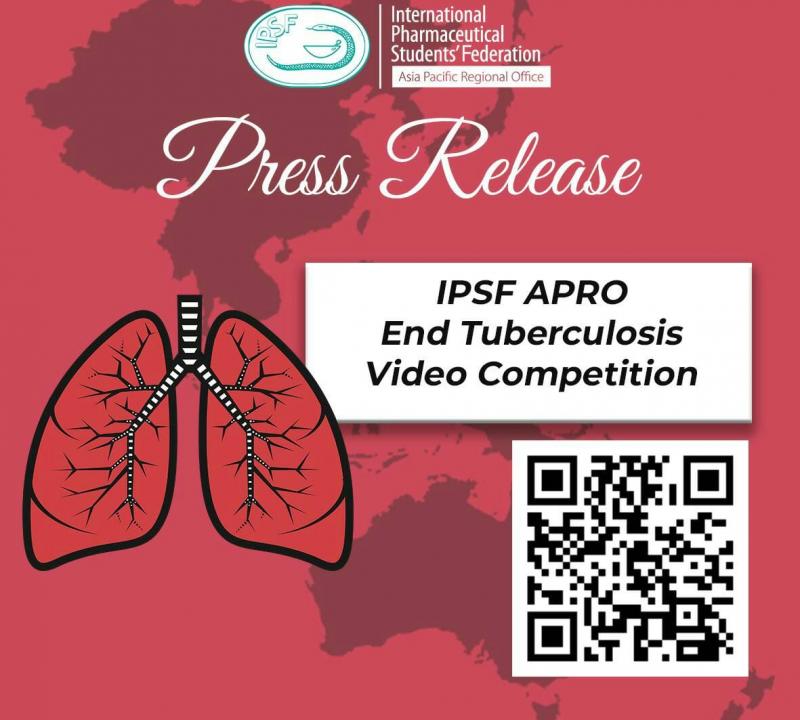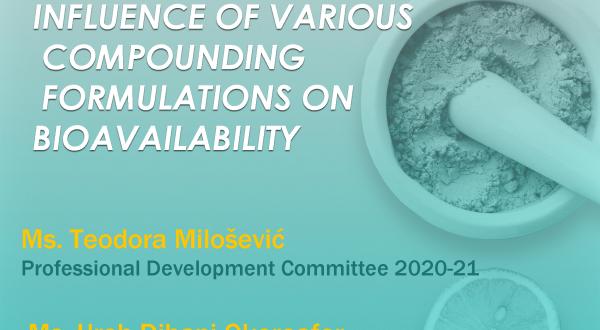
Press Release on APRO EndTB Video Competition 2019-20
Foreword
In 2018, about 10 million people worldwide fell ill with tuberculosis (TB) where 5.7 million of them were men, 3.2 million were women and 1.1 million were children. A total of 1.5 million people, including those with HIV, died from TB in 2018. TB is one of the top 10 causes of death in the world and the leading cause of death from a single infectious agent. 44% of the new cases in 2018 occurred in the Southeast Asian (SEA) region, followed by 24% in the African region and 18% from the Western Pacific region. There are 30 countries with a high TB burden and six of them are in the SEA region; these are Bangladesh, the Democratic People’s Republic of Korea, India, Indonesia, Myanmar and Thailand [1]. Four of these countries are Member Associations in IPSF APRO.
Between 2000 and 2018, approximately 58 million lives were saved through the diagnosis and treatment of TB.This led to the reduction of the mortality rate of TB to 42% worldwide. The global incidence rate has been decreasing at about 2% per year, however, a 4-5% annual incidence rate must be achieved to reach the milestones of the WHO End TB Strategy. On top of that, one of the health targets of the Sustainable Development Goals (SDG) is to end the TB epidemic by 2030 [2]. These statistics and data show the reality and situation we are in and the need for more action to reduce and eventually end TB, especially in the Asia Pacific region.
There are two types of TB conditions; active and latent TB. Individuals with latent TB usually have no symptoms and are not sick as their immune systems are adept to fight the bacteria and stop them from growing. In most people, the bacteria remain inactive for a lifetime thus, those who have latent TB never develop active TB and cannot transmit the disease. However, when an individual’s immune system is weak, the bacteria can become active and multiply in the body, causing an active TB infection. Active TB is infectious and people with active TB may spread the TB bacteria to others. People infected with TB bacteria have a 5- 15% lifetime risk of falling ill with TB. Being malnourished, diabetic, a smoker, and immunocompromised can increase this lifetime risk. Symptoms of TB include a mild cough, weight loss, loss of appetite, fever and night sweats for the first few months. A delay in getting treatment may progress into worse symptoms such as coughing up blood and chest pains, as well as a higher probability of transmitting the disease to other people [3, 4].
Interventions
The End Tuberculosis (TB) Video competition is a new initiative by IPSF APRO aiming to increase the awareness of TB by educating the public while creating a platform for APRO Member Associations to express their creativity.
The fight against TB is not simple and many parties play important roles in ending the spread of TB. Pharmacy students play an especially important part in efforts to advocate for containing and reducing the spread of TB. As future healthcare professionals, pharmacy students around the world are trained from an early age to
understand many diseases, including TB. Therefore, pharmacy students hold significant knowledge on TB, especially on drug-related complications, treatment and prevention of the disease.
Part of the effort to fight TB is of course to raise awareness on the disease and its complications, as well as misconceptions surrounding the disease. Pharmacy students can contribute significantly in this aspect owing to their knowledge on TB. Students nowadays are also generally well-adapted with social media and technology. Using these skills, pharmacy students can spread knowledge and awareness online using various materials such as videos, posters and infographics, and sharing these with many people in efforts to reach a larger audience.
In the IPSF APRO End Tuberculosis (TB) Video Competition, several Member Associations of IPSF APRO each created a video about TB in their own creative manner. Submissions came from Associations from Indonesia, Malaysia, Thailand and Vietnam. The videos creatively covered various topics on TB, such as how the disease is spread and how it manifests in patients. Several videos also importantly covered common myths and misconceptions about TB which can lead to dangerous assumptions and impede the treatment of the disease. While the video competition brought out the creative side of IPSF APRO’s members, it also allowed the Member Associations to share the videos they have made with many people across social media, thereby widening the reach of the videos and important knowledge they contain.
Prospects
Knowing more about TB will increase the awareness of this disease. Most people are unaware of the danger of TB because they do not have sufficient information about the disease. This competition will raise awareness and give out more information about TB, not only for APRO members but also for the general public. Pharmacy students are taught on how to go about a public health awareness campaign and this is one of the ways they can inform the public about the risks and dangers of TB. As the campaign used social media as a medium, this competition will spread awareness and engage more people to learn more about this issue. It is well known that patients tend to stop their medications due to side effects. These videos help to educate people on the importance of taking medicines to effectively fight off infections, in spite of the side effects. It is a pharmacists’ responsibility to communicate with patients to ensure the goal of educating patients about the disease and treatment.
Through this competition, we can discover many things that we may not know about TB. IPSF APRO believes that by equipping ourselves with sufficient knowledge about the disease, we can help to end TB. With more information about the disease and the treatment itself, pharmacy students can participate in ending TB as future pharmacists by improving patient compliance and the safety of anti-TB drugs. As future pharmacists, we have a role in the prevention, the treatment as well as being involved in the early diagnosis of TB. As for the general public, having the knowledge and understanding of TB can also help in the early detection and prevention of the spread of TB. Therefore, is it important that the public seek help from doctors, pharmacists, or any other healthcare professionals when falling sick or experiencing respiratory distress. With the right knowledge, we can fight to end TB together.
References
1. World Health Organization, 2019. Global tuberculosis report 2019. Retrieved from https://www.who.int/tb/publications/global_report/en/
2. World Health Organization, 2020. The End TB Strategy. Retrieved from https://www.who.int/tb/strategy/en/
3. World Health Organization, 2020. Tuberculosis. https://www.who.int/news-room/fact- sheets/detail/tuberculosis
4. Centers for Disease Control and Prevention (CDC), 2016. Latent TB Infection and TB Disease. Retrieved from https://www.cdc.gov/tb/topic/basics/tbinfectiondisease.htm




